Siding Companies Your Guide to Perfect Siding
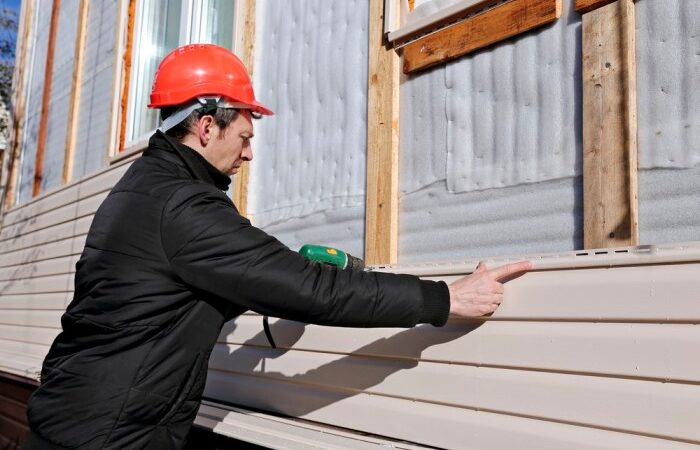
Siding companies offer a world of choices when it comes to updating your home’s exterior. From the classic charm of wood to the low-maintenance appeal of vinyl, selecting the right siding and installer can dramatically impact your home’s look, value, and longevity. This guide will walk you through everything you need to know, from choosing the perfect siding material to finding a reputable contractor.
We’ll cover different siding types, installation processes, cost considerations, and maintenance tips to help you make informed decisions. Understanding the nuances of each siding option—its durability, cost, and aesthetic impact—is key to a successful project. We’ll also equip you with the knowledge to choose a reliable siding company, ensuring a smooth and satisfactory experience.
Types of Siding
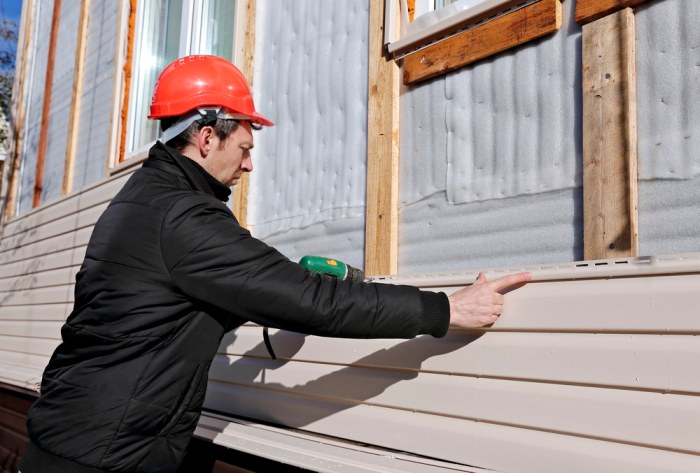
Source: bigeasysiding.com
Choosing the right siding for your home is a crucial decision impacting both aesthetics and longevity. The material you select will influence your home’s curb appeal, its resistance to the elements, and the overall cost of ownership. Let’s explore the most common siding options available.
Vinyl Siding
Vinyl siding is a popular choice due to its affordability and low maintenance. It’s made from polyvinyl chloride (PVC), a durable plastic that resists rot, insect damage, and moisture. Vinyl comes in a wide variety of colors and styles, mimicking the look of wood, brick, or stone. However, it can be susceptible to damage from impact and extreme temperature fluctuations, potentially leading to cracking or warping. It’s best suited for homes in milder climates and architectural styles that benefit from a clean, modern look, or those aiming for a cost-effective solution.
Wood Siding
Wood siding offers a classic, natural look and feel, adding warmth and character to a home. Many types of wood, such as cedar, redwood, and pine, are used for siding, each with its unique grain pattern and durability. While beautiful, wood siding requires more maintenance than vinyl, including regular painting or staining to protect it from the elements and insect infestations. It’s also susceptible to rot and moisture damage if not properly installed and maintained. Wood siding is a great choice for homes with traditional or rustic architectural styles, particularly in areas with moderate climates.
Fiber Cement Siding
Fiber cement siding combines the durability of cement with the workability of wood fibers. This creates a strong, long-lasting material that resists fire, rot, insects, and moisture. It’s also very low-maintenance, requiring only occasional cleaning. Fiber cement siding is more expensive than vinyl but less expensive than wood. It’s a good option for homes in any climate and can mimic the look of wood or stucco, making it suitable for a wide range of architectural styles, from Craftsman to contemporary.
Metal Siding
Metal siding, typically made of aluminum or steel, is extremely durable and long-lasting. It resists fire, rot, insects, and high winds, making it an excellent choice for areas prone to extreme weather. Metal siding is also low-maintenance, requiring only occasional cleaning. However, it can be more expensive than vinyl or fiber cement and may dent or scratch more easily. Metal siding is a great option for modern or industrial-style homes or homes in areas with harsh weather conditions.
Siding Material Comparison
| Siding Type | Durability | Maintenance | Cost |
|---|---|---|---|
| Vinyl | Moderate; susceptible to impact damage and extreme temperatures | Low; occasional cleaning | Low |
| Wood | Moderate to High (depending on the wood type); susceptible to rot, insects, and moisture | High; regular painting or staining | Medium to High |
| Fiber Cement | High; resists fire, rot, insects, and moisture | Low; occasional cleaning | Medium |
| Metal | High; resists fire, rot, insects, and high winds | Low; occasional cleaning | High |
Siding Installation Process
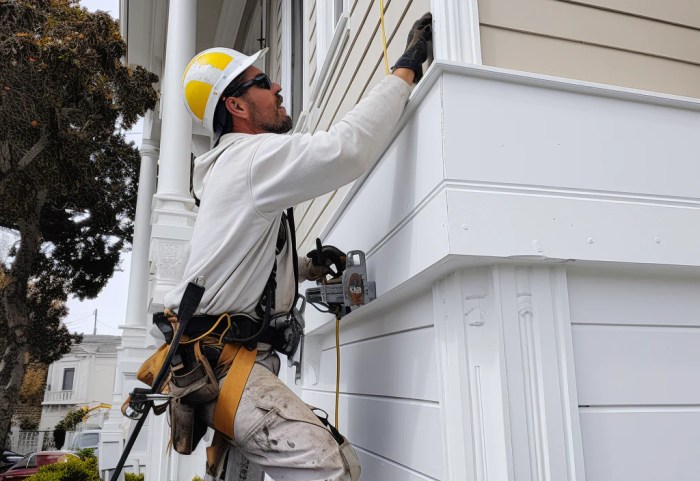
Source: prosuperiorconstruction.com
Getting new siding is a big project, but understanding the process can make it less daunting. A successful siding installation relies heavily on careful preparation and meticulous execution of each step. This ensures a long-lasting, beautiful, and weather-resistant exterior for your home.
A typical siding installation involves several key stages, from initial preparation to final cleanup. Each stage is crucial for a quality outcome, and skipping steps can lead to problems down the line, such as leaks, damage, or an uneven appearance.
Preparation and Underlayment
Proper preparation is the cornerstone of a successful siding installation. This involves thoroughly inspecting the existing wall, removing any old siding or damaged materials, and addressing any underlying issues such as rotted wood or damaged sheathing. This groundwork prevents future problems and ensures the new siding has a stable and secure base. Underlayment, typically a waterproof membrane, is then installed to further protect the structure from moisture and air infiltration. This layer acts as an additional barrier, preventing water damage and improving the overall energy efficiency of the home. Think of it as an extra layer of insurance for your investment. Careful attention to detail in this phase is essential for a long-lasting, high-quality installation.
Siding Installation Steps
Once the preparation is complete, the actual siding installation begins. This process varies slightly depending on the type of siding used (vinyl, fiber cement, wood, etc.), but generally follows these steps:
- Starting Point: Installation usually begins at a corner or a prominent feature of the house, ensuring a clean and aligned start.
- Fastening: Siding panels are attached to the wall using nails or screws, ensuring proper spacing and alignment. The specific fastening method depends on the siding material and manufacturer’s instructions.
- J-Channel and Trim: J-channel and other trim pieces are installed around windows, doors, and corners to provide a neat and weathertight finish. This also helps protect these vulnerable areas from water damage.
- Panel Overlap: Overlapping panels ensure a watertight seal, with proper overlap according to the manufacturer’s specifications. This is crucial for preventing water intrusion.
- Finishing Touches: The final steps involve caulking around windows, doors, and other openings to seal any gaps and ensure a weathertight installation. This final sealing prevents air and water leaks.
Common Challenges and Solutions, Siding companies
Even with careful planning, siding installation can present challenges. Understanding these common issues and their solutions is crucial for a smooth and successful project.
- Uneven Walls: Uneven walls can make it difficult to install siding evenly. Solutions include using shims to level the siding or using furring strips to create a level surface before installation.
- Difficult Weather Conditions: Extreme heat or cold can affect the installation process. Solutions involve scheduling the installation for favorable weather conditions or taking appropriate measures to protect the materials and workers.
- Improper Measurement and Cutting: Incorrect measurements and cuts can lead to gaps or misaligned panels. Solutions involve double-checking measurements and using sharp tools for precise cuts.
- Damage to Siding During Installation: Careless handling can cause dents or scratches in the siding. Solutions include careful handling of materials and using appropriate tools and techniques.
Finding and Choosing a Siding Company
Choosing the right siding company is crucial for a successful and long-lasting siding project. A poorly chosen contractor can lead to shoddy workmanship, costly repairs, and significant headaches. Taking the time to thoroughly research and vet potential companies will save you time, money, and frustration in the long run.
Selecting a reputable siding contractor involves careful consideration of several key factors. These factors ensure not only a quality installation but also protect you from potential problems down the line.
Contractor Experience and Qualifications
Experience is paramount when selecting a siding contractor. Look for companies with a proven track record of successful siding installations. Years in business aren’t the only indicator; inquire about the number of similar projects they’ve completed, and if possible, request references or case studies of past projects. Check their online presence for customer testimonials and reviews. A company that’s been around for a while and consistently receives positive feedback is a good sign. For example, a company boasting 20 years of experience and numerous positive online reviews from verified customers is a much safer bet than a newly established company with limited experience.
Licensing, Insurance, and Bonding
Verify that the siding company holds the necessary licenses and permits to operate in your area. This ensures they are legally compliant and have met specific industry standards. Equally important is ensuring they carry adequate liability insurance and worker’s compensation insurance. This protects you from financial liability should accidents occur on your property during the installation. Bonding offers an additional layer of protection, guaranteeing that the company will complete the job as agreed upon or provide compensation for any damages. Request copies of these documents to verify their validity.
Obtaining and Comparing Multiple Quotes
Getting multiple quotes from different siding companies is essential for fair price comparison. Don’t just focus on the lowest price; ensure that the quotes include detailed breakdowns of materials, labor costs, and any additional fees. Compare the proposed materials, warranties, and timelines. A slightly higher quote might offer superior materials or a longer warranty, ultimately saving you money in the long run. For instance, a quote offering a 25-year warranty on materials may be more cost-effective than a lower quote with only a 10-year warranty, even if the initial cost is higher.
Checklist of Questions to Ask Potential Siding Companies
Before committing to a siding company, it’s vital to ask specific questions to assess their suitability. This ensures you are fully informed and confident in your choice.
- Can you provide references from past clients?
- What is your process for handling unforeseen issues during installation?
- What type of warranty do you offer on materials and workmanship?
- What is your estimated timeline for completing the project?
- Do you have experience working with my specific type of siding?
- What is your payment schedule and terms?
- What permits and licenses do you hold?
- Are your workers insured and bonded?
- Can you provide a detailed written contract outlining all aspects of the project?
- What is your cleanup process after the installation is complete?
Siding Maintenance and Repair: Siding Companies
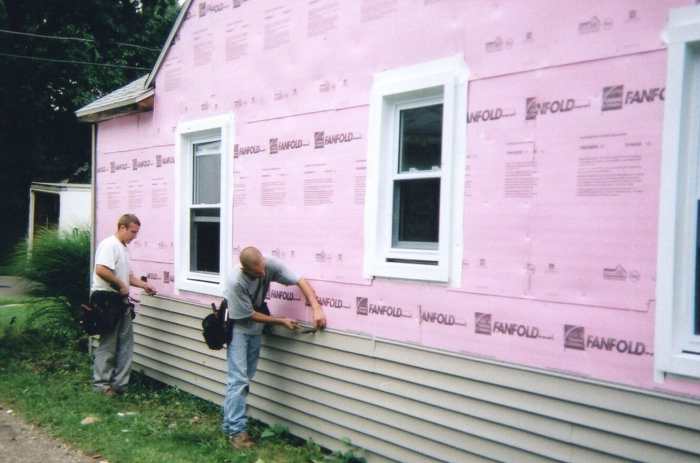
Source: modernize.com
Keeping your siding looking great and lasting for years requires a little regular attention. This section covers maintenance schedules, common problems, and preventative measures to keep your home’s exterior in top shape. Understanding your siding type is key to proper maintenance.
Siding Material Maintenance Schedules
Different siding materials require different maintenance approaches. A regular inspection schedule, tailored to your siding type, is crucial for early problem detection.
- Vinyl Siding: Requires minimal maintenance. A yearly cleaning with a hose and mild detergent is usually sufficient. Inspect for cracks or damage after severe weather events.
- Wood Siding: Needs more frequent attention. Yearly cleaning and inspection are essential. Repainting or restaining every 3-5 years is often necessary to protect the wood from rot and insect damage. Consider applying a water-repellent sealant every few years.
- Fiber Cement Siding: Relatively low-maintenance. Yearly cleaning with a hose and brush is generally recommended. Inspect for cracks or damage after storms or impacts.
- Aluminum Siding: Durable and easy to maintain. Regular cleaning with soap and water is all that’s usually needed. Inspect for dents or scratches.
Common Siding Problems and Repair Methods
Several issues can affect your siding over time. Addressing these problems promptly prevents further damage and maintains your home’s curb appeal.
- Cracks: Small cracks can often be repaired with caulk specifically designed for your siding material. Larger cracks may require the replacement of the damaged siding section.
- Water Damage: Water intrusion can lead to rot, mold, and structural problems. Repair any damaged flashing or caulking around windows and doors immediately. Address any leaks promptly to prevent extensive damage.
- Insect Infestation: Wood siding is susceptible to insect damage. Regular inspection and treatment with appropriate insecticides can prevent significant problems. Severe infestations may necessitate professional pest control.
- Weather Damage: Hail, strong winds, and extreme temperatures can cause dents, warping, or breakage. Repair or replace damaged sections as needed. Consider installing protective barriers, such as storm shutters, in areas prone to severe weather.
Preventative Measures for Extended Siding Lifespan
Proactive maintenance is the best way to extend the life of your siding.
Regular cleaning, prompt repair of damage, and appropriate seasonal protection are crucial for maintaining the beauty and integrity of your home’s exterior. This includes addressing issues like damaged flashing, loose caulking, and insect infestations promptly.
Cost Considerations for Siding Projects
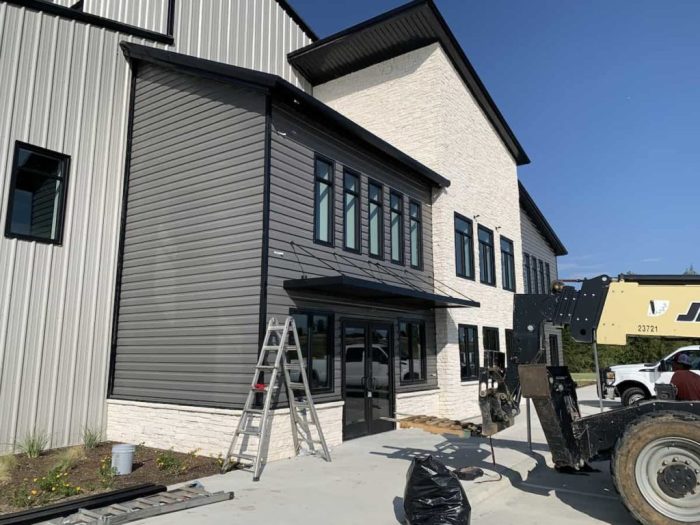
Source: mytexascontracting.com
Replacing or installing siding is a significant home improvement project, and understanding the associated costs is crucial for budgeting and planning. Several factors influence the final price, making it essential to get multiple quotes and carefully consider all aspects before committing. This section breaks down the key cost drivers and provides a hypothetical budget to help you navigate the financial side of your siding project.
Factors Influencing Siding Project Costs
The total cost of a siding project is determined by a combination of material costs, labor costs, and the project’s overall size and complexity. Material costs vary significantly depending on the siding type (vinyl, wood, fiber cement, etc.), its quality, and the quantity needed. Labor costs are influenced by the project’s size, the complexity of the installation (e.g., intricate designs, multiple stories), and the contractor’s hourly rate or overall pricing structure. Additional factors include permits, waste disposal, and potential unforeseen issues during installation. The condition of the existing siding and the need for additional repairs or underlayment also significantly impact the overall cost.
Hypothetical Budget Breakdown for Siding Installation
Let’s consider a hypothetical 1,500-square-foot house requiring new siding installation. This is a mid-range project size.
Material Costs: Assuming the homeowner opts for mid-range vinyl siding, the material cost might be around $5,000 – $7,000. This includes the siding panels, trim, flashing, and fasteners. Higher-end materials like fiber cement or cedar wood will significantly increase this cost.
Labor Costs: Labor costs for a project of this size could range from $6,000 to $10,000, depending on the contractor’s rates and the complexity of the job. Factors like difficult-to-reach areas or extensive prep work will increase labor costs.
Permits and Other Expenses: Permits and other miscellaneous costs, such as waste disposal, could add another $500 to $1,500 to the total.
Total Estimated Cost: Combining these estimates, the total cost for this hypothetical siding project could range from $11,500 to $18,500.
Return on Investment (ROI) for Different Siding Options
The ROI of a siding project depends on the chosen material’s lifespan, maintenance requirements, and aesthetic appeal. While it’s difficult to give exact figures without specific local market conditions, we can illustrate the concept using a simplified table. This table assumes a 20-year lifespan for all siding types and focuses on the initial investment. Actual ROI can vary significantly based on property value appreciation and individual circumstances.
| Siding Type | Material Cost | Labor Cost | Total Cost |
|---|---|---|---|
| Vinyl Siding (Mid-Range) | $6,000 | $8,000 | $14,000 |
| Fiber Cement Siding (Mid-Range) | $10,000 | $10,000 | $20,000 |
| Cedar Wood Siding (Premium) | $15,000 | $12,000 | $27,000 |
Note: These are estimated costs and can vary significantly based on location, project specifics, and contractor selection. Always obtain multiple quotes before making a decision. Consider factors like energy efficiency improvements (which can offset costs over time) when calculating your ROI.
Siding and Home Value
Choosing the right siding can significantly impact your home’s curb appeal and, consequently, its market value. A well-maintained, attractive exterior instantly boosts a property’s desirability, making it more appealing to potential buyers and potentially commanding a higher sale price. Conversely, outdated or damaged siding can detract from a home’s value, making it harder to sell and potentially leading to a lower offer. The material you choose plays a crucial role in this equation.
Siding materials vary widely in their impact on property value. Higher-end materials often translate to a greater return on investment, while more budget-friendly options might offer less of an increase in value but still provide a noticeable improvement over severely damaged or outdated siding. The longevity and maintenance requirements of the siding also factor into its overall contribution to your home’s worth.
The Influence of Siding Material on Property Value
Different siding materials offer varying levels of aesthetic appeal and durability, directly influencing a home’s perceived value. For instance, fiber cement siding, known for its durability and low maintenance, often commands a higher price point than vinyl siding. However, even vinyl, when installed correctly and maintained well, can significantly improve a home’s appearance and value compared to older, deteriorating siding. Brick, while a more expensive initial investment, tends to be viewed as a high-value material, increasing a home’s perceived worth significantly. The choice depends on the budget and desired return on investment.
Examples of Updated Siding Enhancing Aesthetic Appeal
Imagine a home with faded, cracked aluminum siding. Replacing it with crisp, clean-lined vinyl siding in a neutral color like a soft gray or creamy white instantly transforms the exterior. The new siding eliminates the visual clutter of the old, creating a smoother, more modern look. The uniformity of the new siding contrasts sharply with the previously uneven and aged appearance, giving the house a refreshed and well-maintained feel.
Consider another example: a home with aging wood siding showing significant signs of wear. Replacing this with fiber cement siding, painted a deep, rich color like navy blue or hunter green, creates a dramatic and sophisticated effect. The new siding’s texture and color add depth and visual interest, enhancing the home’s architectural features. The absence of peeling paint and weathering further contributes to the overall improved aesthetic. The choice of color, in both cases, significantly impacts the visual appeal and can increase perceived value.
Cost Considerations and Return on Investment
While upgrading siding is an investment, it’s crucial to consider the potential return. A cost-benefit analysis should be conducted before undertaking any project. While high-end materials like stone or brick may have a higher initial cost, they can lead to a significant increase in property value, offering a good return on investment. More affordable options like vinyl or engineered wood siding can still provide a noticeable improvement and a positive return, particularly when compared to the cost of extensive repairs to existing damaged siding. It is essential to weigh the initial cost against the potential increase in market value and the enhanced curb appeal.
Warranty and Guarantees
Choosing siding is a significant investment, and understanding the warranties and guarantees offered is crucial to protecting that investment. These assurances provide peace of mind and recourse should problems arise with the materials or installation. Knowing what’s covered and how to file a claim can save you time, money, and frustration down the line.
Warranties and guarantees offered by siding manufacturers and contractors vary significantly. Manufacturer warranties typically cover defects in materials, while contractor warranties usually cover the workmanship of the installation. It’s essential to carefully review both to understand the full scope of protection you’re receiving. A comprehensive understanding of these warranties will empower you to make informed decisions and avoid potential issues.
Types of Siding Warranties
Siding warranties can be broadly categorized into several types. Understanding these differences is key to assessing the value of a particular offer. For instance, a limited warranty might cover only manufacturing defects, while a full warranty might encompass both defects and labor.
- Limited Warranty: This type of warranty covers only defects in materials and manufacturing, typically for a specific period (e.g., 10 years). It usually excludes damage caused by improper installation, weather events, or normal wear and tear.
- Full Warranty: A full warranty offers more extensive coverage, often including both materials and labor for a longer duration. This can provide significantly more protection against unforeseen issues.
- Transferable Warranty: This type of warranty allows the coverage to be transferred to a subsequent homeowner if the property is sold, protecting the investment even after the original purchaser moves.
- Prorated Warranty: With a prorated warranty, the manufacturer’s responsibility for repair or replacement diminishes over time. For example, a 20-year prorated warranty might cover 100% of the cost of repairs in the first five years, decreasing to 50% in years six to ten, and so on.
Filing a Siding Warranty Claim
The process of filing a claim varies depending on the manufacturer and contractor involved. However, generally, it involves these steps:
- Document the Damage: Thoroughly document the damage with photographs, videos, and detailed descriptions. Note the date and location of the damage.
- Contact the Manufacturer or Contractor: Contact the appropriate party (manufacturer for material defects, contractor for installation issues) and notify them of the problem. Usually, this involves submitting a written claim form.
- Provide Necessary Documentation: Provide all the documentation you’ve collected, including purchase receipts, warranty certificates, and photos of the damage.
- Follow-up: Follow up on the claim’s status regularly. Keep records of all communications.
Example of a Warranty Claim Scenario
Imagine a homeowner notices bubbling in their vinyl siding five years after installation. They carefully document the issue with photos and a detailed description. They then contact the siding manufacturer, presenting their warranty documentation and the evidence of the damage. The manufacturer assesses the claim, determining if it falls under the warranty’s coverage. If approved, they might send a representative to inspect the damage and arrange for repairs or replacement. If denied, they would provide a written explanation of their decision.
Environmental Impact of Siding Materials
Choosing siding involves more than just aesthetics and cost; it also has significant environmental implications. The manufacturing, transportation, installation, and eventual disposal of siding materials all contribute to your carbon footprint. Understanding the environmental impact of different options is crucial for making an informed and responsible decision.
Choosing eco-friendly siding options can significantly reduce the environmental burden of your home improvement project. This involves considering the material’s lifecycle, from its origin and manufacturing process to its recyclability and potential for reuse. Let’s explore some key factors to consider.
Recyclability and Sustainability of Common Siding Materials
The recyclability and overall sustainability of siding materials vary considerably. For example, vinyl siding, while durable and relatively inexpensive, is not readily recyclable in many areas and its production relies on fossil fuels. Conversely, fiber cement siding, although containing cement, can have a lower carbon footprint than vinyl due to its longer lifespan and potential for component recycling. Wood siding, sourced from responsibly managed forests, offers a renewable option, but its longevity and susceptibility to damage require careful consideration. Metal sidings, such as aluminum or steel, are recyclable, but their manufacturing process can be energy-intensive. Each material presents a unique set of environmental trade-offs.
Eco-Friendly Siding Options
Several siding options are marketed as environmentally friendly. These often include recycled content in their manufacturing process or are made from rapidly renewable resources. For instance, some manufacturers utilize recycled plastic in their vinyl siding formulations, reducing reliance on virgin materials. Similarly, wood siding certified by organizations like the Forest Stewardship Council (FSC) ensures responsible forestry practices. Bamboo siding is another example of a rapidly renewable resource that can be a sustainable alternative, although its durability and maintenance requirements should be carefully evaluated. Ultimately, “eco-friendly” claims should be verified by independent certifications and thorough research.
Environmentally Responsible Practices in Siding Installation and Disposal
Minimizing the environmental impact of siding extends beyond material selection to the installation and disposal phases. Careful planning during installation can reduce waste generation. Precise measurements and efficient cutting techniques minimize material scraps. Proper disposal of leftover materials is equally important. Many communities offer recycling programs for specific siding materials. When recycling isn’t an option, responsible disposal at designated waste facilities should be prioritized to avoid environmental contamination. Furthermore, selecting a siding contractor committed to sustainable practices can significantly contribute to minimizing the project’s overall environmental footprint. They may utilize efficient installation methods, prioritize waste reduction, and adhere to local environmental regulations.
Final Summary
Transforming your home’s exterior with new siding is a significant investment, but one that can significantly boost curb appeal and property value. By carefully considering the factors discussed—siding materials, installation processes, contractor selection, and maintenance—you can confidently embark on your siding project. Remember, a little research and planning go a long way in ensuring a beautiful and long-lasting result. Choose wisely, and enjoy your newly sided home!
Detailed FAQs
What’s the average lifespan of different siding materials?
Vinyl siding typically lasts 20-30 years, wood siding 20-50 years (depending on the type and maintenance), fiber cement 50+ years, and metal siding can last 50 years or more.
How do I know if a siding company is reputable?
Check online reviews, verify their licensing and insurance, ask for references, and ensure they have experience with the type of siding you’re choosing.
What are some common red flags to watch out for when hiring a siding company?
Unlicensed contractors, extremely low bids (which could indicate low-quality work), vague contracts, and difficulty getting in touch after the initial contact are all potential red flags.
Can I install the siding myself?
While possible for some types of siding, it’s generally recommended to hire a professional. Improper installation can lead to costly repairs and void warranties.
What is the best time of year to install siding?
Spring and fall are generally ideal, avoiding extreme heat or cold that can impact installation and material performance.
Comments are closed.